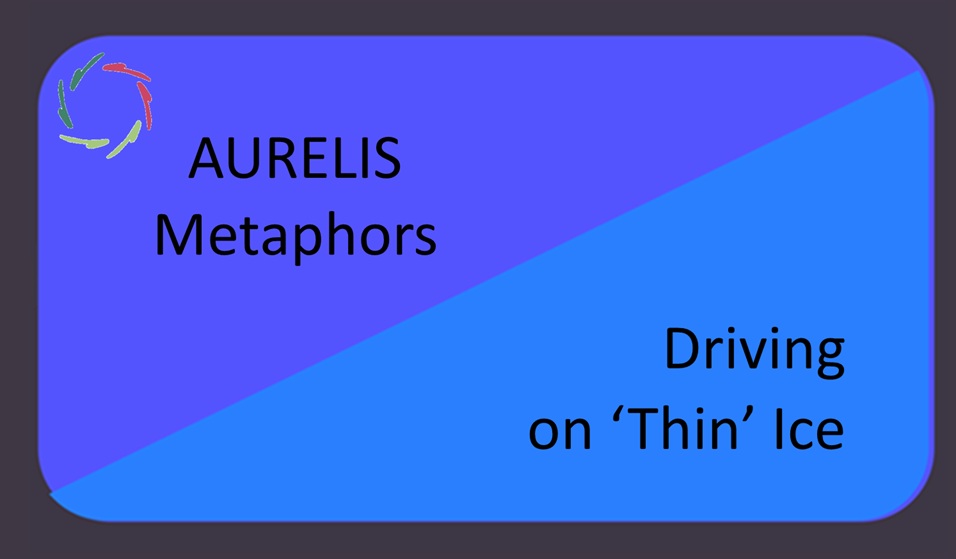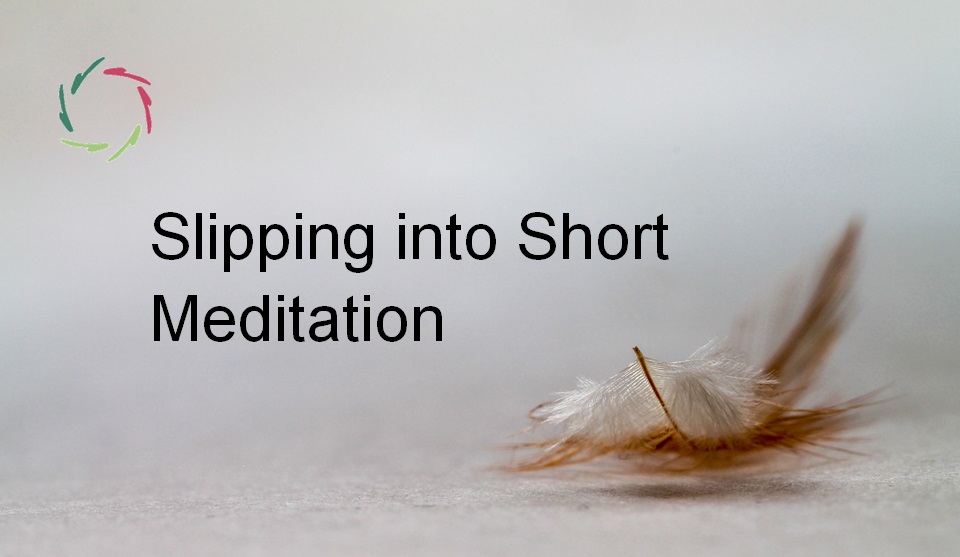Driving on ‘Thin’ Ice

When driving on thin ice, trying to force control only increases the risk of losing it.
This is part of the series ‘A Journey through 12 AURELIS Metaphors.’ For an introduction to this series and a list of the 12 metaphors, click here.
Imagine driving a car on a road covered in ice. Suddenly, the wheels begin to skid. The natural instinct is to grab the steering wheel tightly, turn it forcefully, or slam on the brakes. But these actions often make things worse. The car skids even further, and control slips away entirely.
This metaphor highlights the paradox of control. When we try to control situations rigidly, we may unintentionally make things worse. True control comes from stepping back, loosening our grip, and aligning with the broader dynamics of the situation. This approach requires trust in the process and a willingness to let go of excessive control.
Letting go to gain control
The icy road represents life’s uncertainties and challenges. When faced with difficulties, our instinct often leads us to overcorrect, grasping for control in ways that create more chaos. This response stems from fear and the ego’s desire to dominate.
However, when we learn to relax and steer gently, we find a different kind of control — one that comes from working with the situation rather than against it. This form of control arises from trusting the larger whole of yourself, beyond the immediate impulses of the ego.
AURELIS and the invitation to let go
An AurelisOnLine session is like learning to drive on thin ice. It doesn’t teach you to resist or panic but instead encourages a calm, balanced approach. By working with your total self, you gain a deeper understanding of how to navigate life’s slippery challenges with grace and confidence.
This approach allows you to move beyond fear and rigidity, cultivating a sense of ease and flow even in the face of uncertainty.
Exploring together with Lisa
Lisa, your AURELIS companion, can help you recognize areas of your life where you’re oversteering or holding on too tightly. She might ask:
- “What are you gripping too tightly, and how is it affecting you?”
- “What would happen if you eased your grip and trusted the process?”
Lisa’s guidance helps you release unnecessary tension, allowing you to move forward with greater clarity and balance.
Take a moment to reflect:
- Think of a time when you tried to force control in a challenging situation. What was the result?
- Now imagine navigating that situation with ease, gently steering instead of forcing. How might it feel different?
Try this short Compassionate Affirmation:
“I let go of rigid control. I trust in my ability to navigate challenges with calm and balance.”
―
Addendum – Session Transcript: Driving on ‘Thin’ Ice
This session is made by Lisa. Click here if you want Lisa to speak it out loud. (soon) If you want to talk with Lisa about this session and your experiences with it, click [Ask Lisa].
Hello, and welcome. In this session, we’ll explore how letting go of rigid control can help you navigate life’s challenges with calm and balance. Just like driving on thin ice, true control often comes from steering gently and trusting the process. There’s no need to force anything. Let this be a time to relax and open yourself to a new perspective.
Find a comfortable position, letting your hands rest softly. When you’re ready, close your eyes. Begin by taking a deep breath in… hold it softly for a moment… and then exhale, releasing tension from your body. Let’s do this two more times. With each breath, allow yourself to relax more deeply, settling into this moment of calm and ease.
Now, imagine yourself driving on an icy road. The surface beneath you is slippery, and the car begins to skid. Your natural instinct is to grab the steering wheel tightly, to force it back into control. You might even slam on the brakes, hoping to stop the skid. But notice what happens: the car spins further out of control. The harder you try to force control, the more chaotic it becomes.
Take a deep breath in, and as you exhale, let this image soften. Now, imagine a different approach. Once again, the car begins to skid. But this time, you loosen your grip on the steering wheel slightly. You steer gently in the direction of the skid, allowing the car to realign naturally. Your movements are calm and measured, working with the situation rather than against it. Feel the difference this makes. The car stabilizes, and you regain control — not by forcing it, but by trusting the process.
This approach mirrors how you can navigate life’s challenges. When faced with difficult situations, the instinct to overcontrol can often lead to more problems. But when you relax and trust in your deeper self, you can steer gently, finding harmony and balance even in the most uncertain circumstances.
Now, softly repeat these words to yourself:
“I let go of rigid control.I trust in my ability to navigate challenges with calm and balance.I work with myself, not against myself.”
Say it again, feeling the truth of these words settle deeply within you:
“I let go of rigid control.I trust in my ability to navigate challenges with calm and balance.I work with myself, not against myself.”
As you repeat these words, imagine yourself driving smoothly, navigating the icy road with ease. You’re in harmony with the situation, not resisting it. This sense of calm and control comes from within you, a reflection of your deeper self.
When you’re ready, begin to bring your awareness back to your body. Feel the surface beneath you, the air around you. Take one more deep breath in… and as you exhale, carry this sense of calm and confidence into your day. Gently open your eyes when it feels right.
Thank you for being here. Take care.
Next in the Series: The Painting and the Paint
From navigating slippery roads, we move to the artistry of life, exploring the interplay between the painting and the paint. Stay tuned for the next step in this journey.


